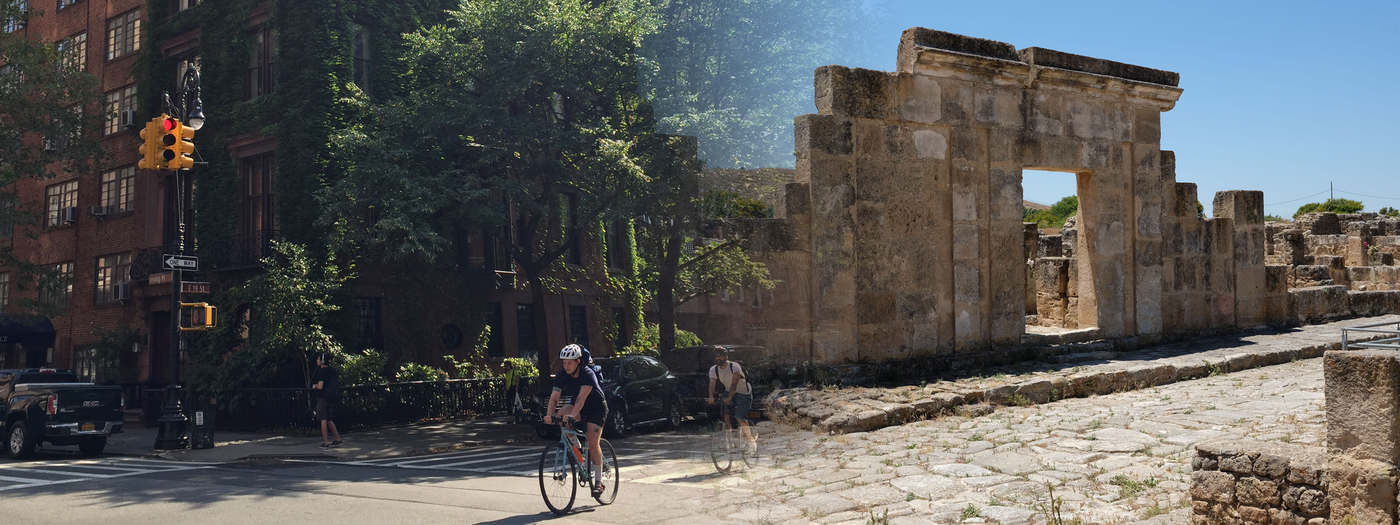The Archaeology of Neighborhood Life: Concepts, Communities, and Change
Conference organized by J. Andrew Dufton (ISAW) and Katherine Harrington (Florida State University)
December 14
This article first appeared in ISAW Newsletter 22 (Fall 2018).
 Juxtaposing modern (NYC) and ancient (Utica, Tunisia) neighborhood life
Juxtaposing modern (NYC) and ancient (Utica, Tunisia) neighborhood life
The neighborhood offers rich ground to explore the social life of the ancient city—an intermediate unit of study, smaller than issues of top-down urban planning or state action but larger than the intimate details of the household. Yet despite this potential, the archaeology and history of neighborhoods remains underappreciated.
This conference takes full advantage of a growing number of scholars interested in the communal and cultural aspects of city districts. Thematic topics include the conceptual and methodological implications of the neighborhood, its role in community formation, and its relevance in understanding long-term urban developments. Conference speakers, drawn from diverse departments with research in disparate regions and periods, all share a commitment to understanding and comparing neighborhoods. Their work relies not solely on quantification but on social foundations, not only on big data but also on close, comprehensive readings of the dynamic sphere of daily interaction among city residents. The interdisciplinary exchange and dialogue created by this event will set an exciting new research agenda for future studies on the archaeology of neighborhood life.